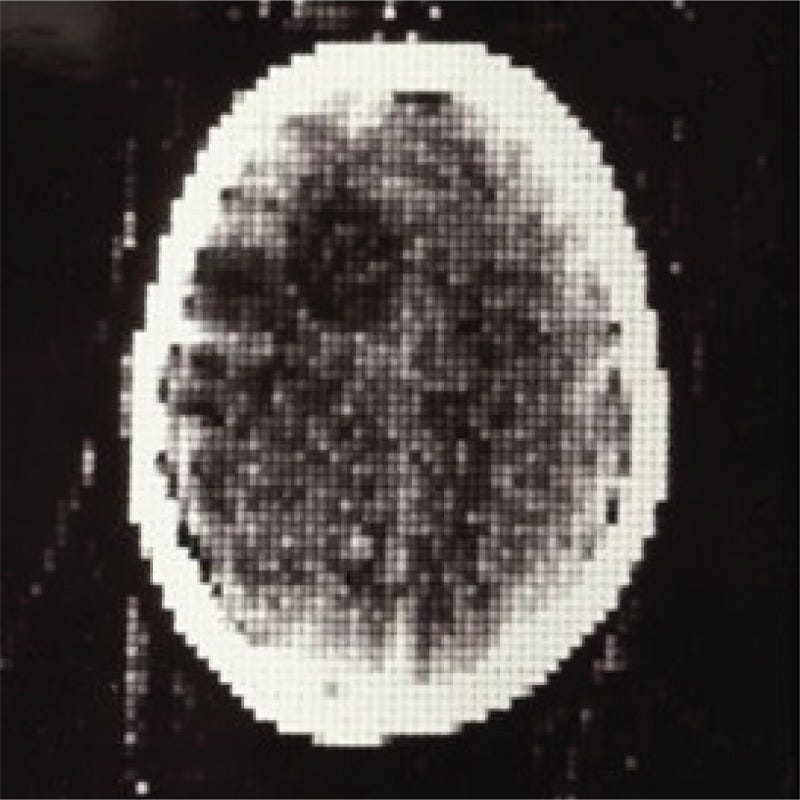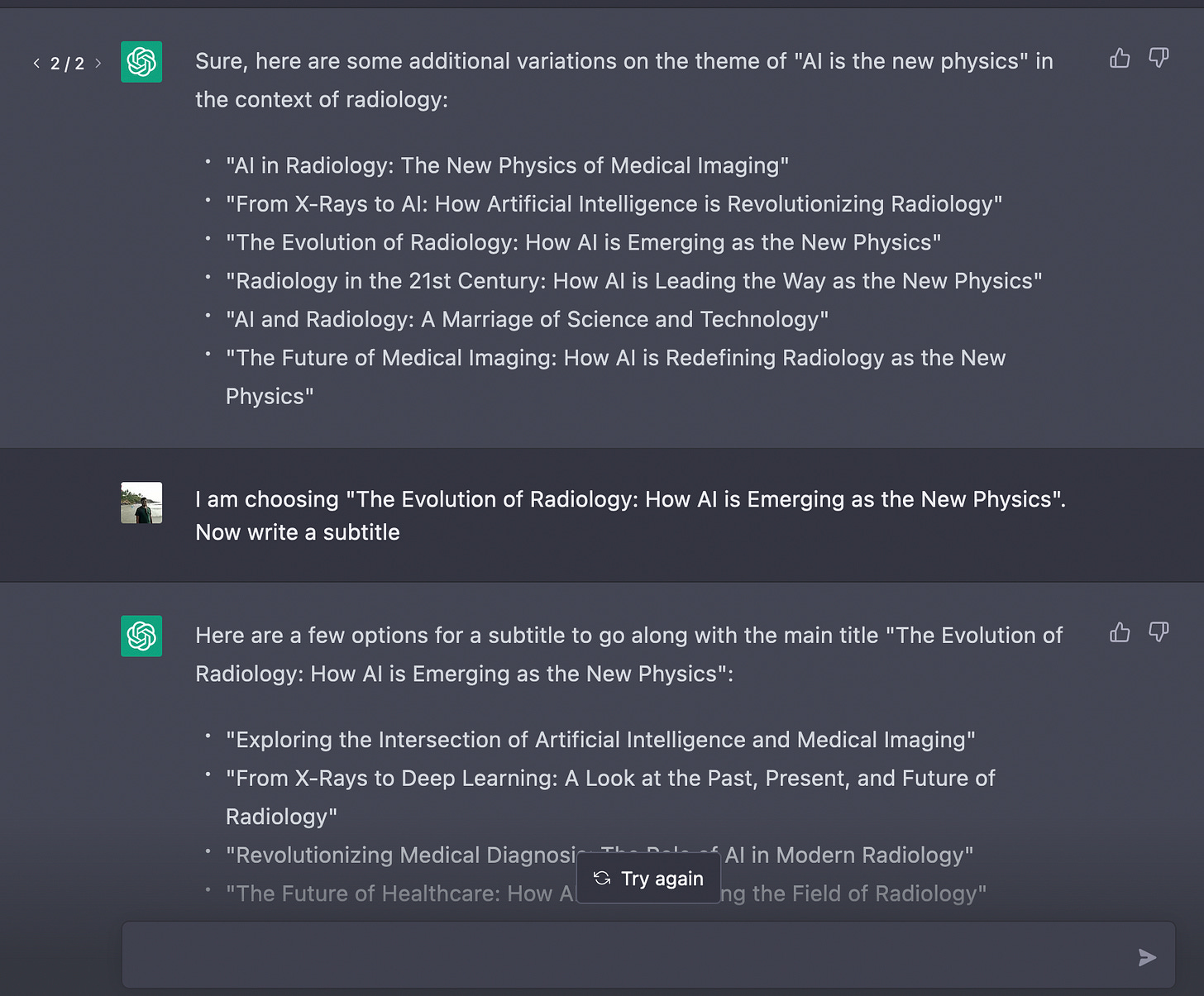The Evolution of Radiology: AI is the New Physics
A Look at the Past, Present, and Future of Radiology
I tweeted recently that “AI is the new physics for radiology.” AI will play a significant role in the field of radiology, similar to how physics has shaped the development of radiology in the past. In this post, I explore the history and current technologies used in radiology, and how AI is expected to shape the future of the field.


Past: Era of Physics
Radiology has always been about science and technology. In 1895, Wilhelm Roentgen discovered that he could use radiation from an experimental substance to view the bones in his wife's hand. He called this unknown radiation X-Rays where X stood for a variable to be solved. That was the first ever X-Ray taken.
Roentgen was not a physician: he was a physicist. Some doctors saw value in looking inside bodies without opening them. They started specializing in looking at those films and diagnosing conditions. They came to be known as radiologists. “Radio” because they specialize in using radiation. And that is how radiology came to existence.
In 1970s, Godfrey Hounsfield, an engineer, figured that he can use X-ray radiation to build 3-dimensional representations of the insides of body. This led to creation of CT scanners. As physics and technology advanced, especially with experiments from high energy particle physics, people started taking advantage of quantum physics. Super exotic concept called “spin” became the basis for MRIs (Magnetic Resonance Imaging).
Present: Era of Computers
In the late 80s and 90s, another important technology started becoming mainstream — Computers. The first microchip was created in the 1970s, well after X-Rays became the norm in diagnostics. This was the start of another huge revolution. Radiologists, being the tech junkies they are, immediately saw the value of digitization. They saw how they can efficiently see lots of X-Rays and CTs to help diagnose many more patients using computers.
This was the start of PACS (Picture Archiving and Communication System) revolution. When people think of digital health, they think of EMRs. Many people will be surprised to know that EMR is only a decade old phenomena. EMRs started picking up in 2010s well after PACS and digitization were adopted by radiologists. In fact DICOM (Digital Imaging and Communications in Medicine), the protocol powering PACS is older than HTTP (Hypertext Transfer Protocol) and the internet itself.

Radiologists were also early adopters of the internet and the power of cloud. They realized that the internet allowed them to diagnose patients that are not even present in the same hospital they are located in. This was the original telehealth program which is so much hyped today. Teleradiology remains the most successful telehealth program ever and in my opinion will remain so in the foreseeable future.
Future: Era of Artificial Intelligence
Another revolution is now underway. In 2012, Alex Krizhevsky and Geoff Hinton used fairly mature technology called neural networks to do image recognition. What enabled them was not the novelty of their idea but computation power from Moore’s Law and the massive data collected from the internet. This started another big revolution called Deep learning. We call this ‘Artificial Intelligence’ (AI) in common parlance.
The same factors that enabled Hinton has also enabled AI scientists like myself to create AI algorithms for radiology imaging. PACS, internet and teleradiology enabled us to create super large databases unimaginable earlier. Combined with the power of GPUs, we created AI algorithms to help read CT scans and X-Rays. In fact, I consider my paper published in The Lancet in 2018 landmark in proving that AI in radiology is indeed a thing now.
And the revolution has just started. Algorithms are being used to help diagnose patients at a scale unimaginable before. Day by day, AI is getting more and more powerful allowing radiologists to make decisions way more impactful than ever before. For example, with the power of AI, they’re picking up life threatening conditions like Lung Cancer and stroke very early and ensuring better patient care. Radiology is poised to drive yet another revolution in healthcare.
Conclusion
I will conclude my post with what I started with: radiologists are and will continue to be the tech people of the hospitals. When Hinton made that infamous statement that radiologists are no longer required, he never understood what radiologists do. Little did he know that radiologists are the ones who use new technologies to save people’s lives. Physics was the original technology they used and AI will be the new technology they will use. It is, therefore, no exaggeration to say “AI is the new physics” :)
The future of radiology has never been brighter. I am so proud to be part of this revolution.
P.S: I’m sure it amuses you to know that I used ChatGPT AI to help me edit this post!












50 lines about the past and 15 about the future. I wished an AI company had more to say...